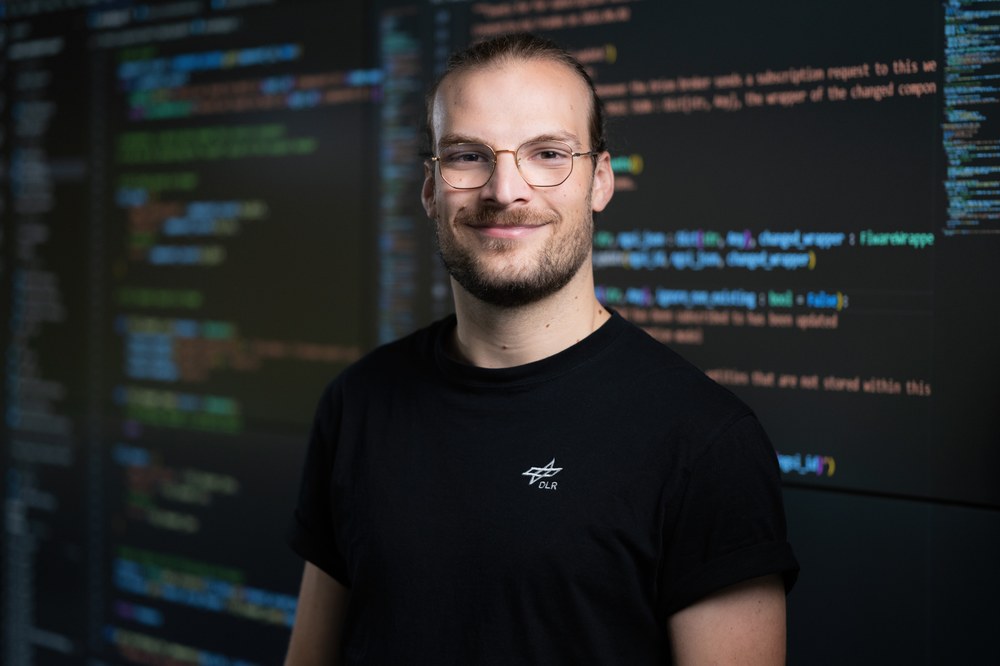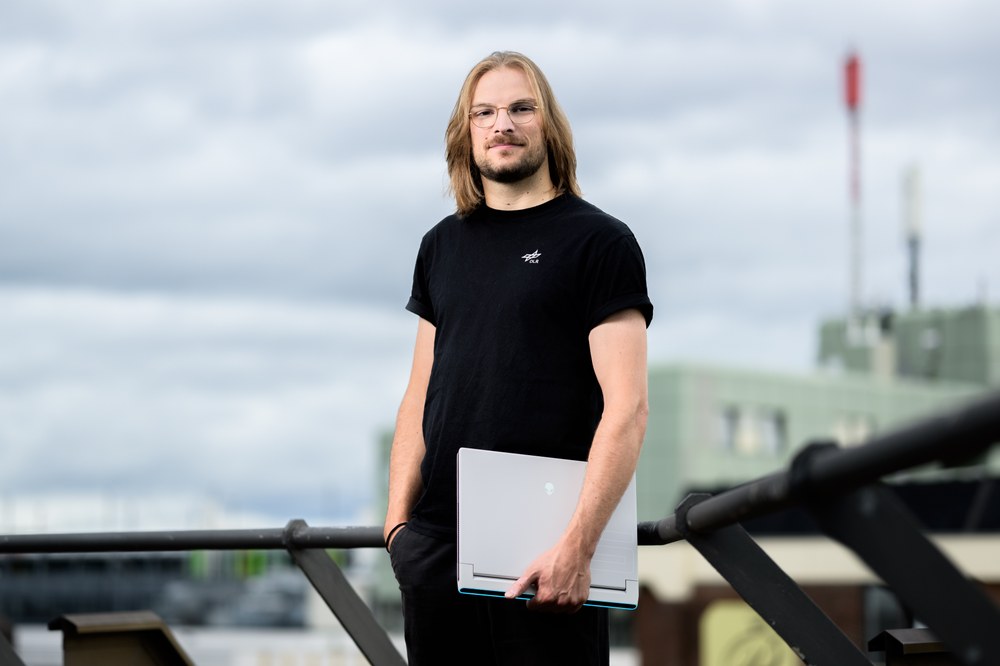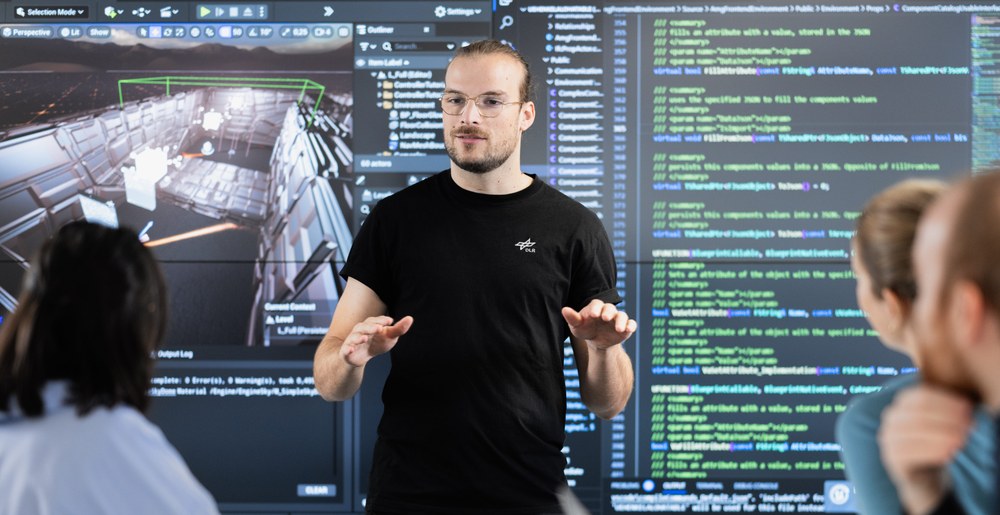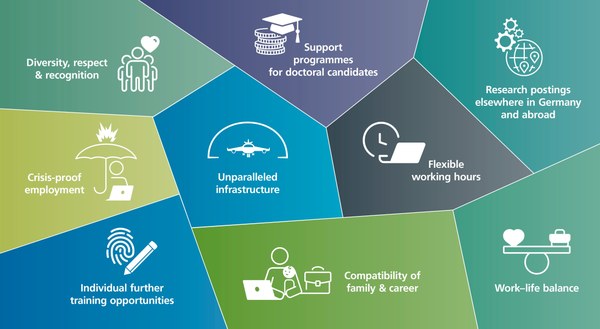Marius Stürmer
Field of study: Mechatronics
Now: Institute for the Protection of Terrestrial Infrastructures
Marius Stürmer completed a degree in mechatronics and has been a researcher at the Institute for the Protection of Terrestrial Infrastructures in Sankt Augustin since 2022. In this interview, he shares insights into his work in the Digital Twins for Infrastructure department, the potential applications of his findings and his favourite part of the job.
Marius, what do you look forward to when coming to work in the morning?
Marius: Above all, I look forward to seeing my colleagues and hopefully learning something new or solving a problem.
What are you researching or working on?
Marius: At the Institute, our general focus is on finding ways to make infrastructure more resilient. Digital twins, which can serve as a digital representation of the actual infrastructure and be used, for example, to identify crises or for training in preventive measures, can play a part in this.
Our team is working on automating the creation of such digital twins. I‘m using machine learning methods to try to digitalise technical plans of the infrastructure and feed them into a simulation model, preferably automatically.
„I‘m using machine learning methods to try to digitalise technical plans of the infrastructure and feed them into a simulation model, preferably automatically“
What does your typical working day involve?
Marius: Typically, I start the day by replying to emails and catching up with students who are completing an internship or working on their master's thesis with us, in case they have any questions or are facing any challenges. Then, depending on what needs to be done, I prepare presentations or write status updates to provide a good basis for our discussions.
My working day also involves a fair bit of programming – for example, to prepare data, train machine learning models, run simulations or evaluate results.
There's something satisfying about leaving a model to train over the weekend and seeing how much it has progressed by Monday morning.

Where and how is your work being used?
Marius: Within our department, the results are used to generate virtual reality environments and simulation models as automatically as possible.
Whilst the models can be used for prediction, the VR environments are designed to support the simulation of critical situations for training purposes. Potential users include public authorities and infrastructure operators. My findings are also useful for the research community.
„The VR environments are designed to support the simulation of critical situations for training purposes“
What are the highlights of your work?
Marius: I really enjoy presenting my work and discussing my progress at conferences, and I also enjoy networking. The DLR Knowledge Exchange workshops are great; you can learn about other research priorities at DLR and make new contacts within the organisation.
Participating in international conferences and presenting my work to a different audience is just as rewarding. These events are often an opportunity to travel outside Germany and gather even more input and new ideas.

What special skills can you make good use of in your job?
Marius: I have a fairly broad range of interests and I work at the interface between various fields of expertise within our department, for example. I am good at keeping an overview of the ‘big picture’ and I notice that this is appreciated.
„My favourite thing about my job is that I'm given a lot of freedom and we work on an equal footing“
Leave us a final thought.
Marius: My favourite thing about my job is that I'm given a lot of freedom and we work on an equal footing. I find that very productive and it's also what I enjoy most.
Plus, we're given the opportunity to develop our skills and explore topics that could prove useful in the long term.




